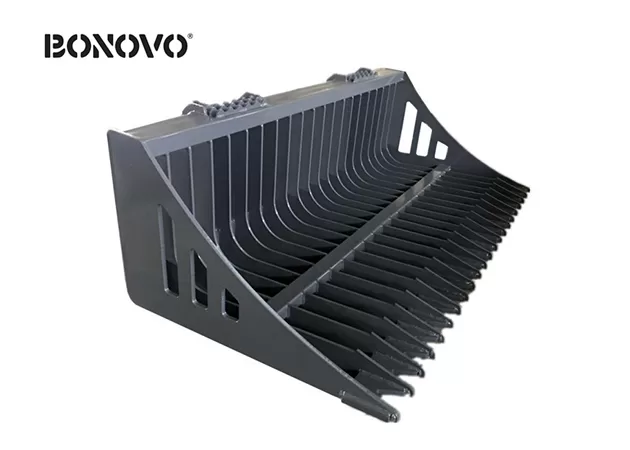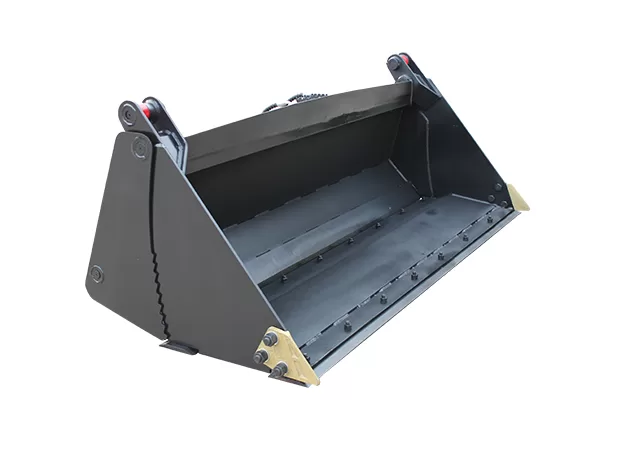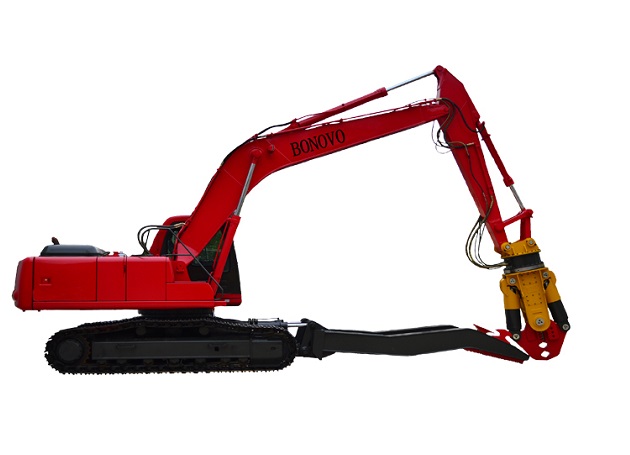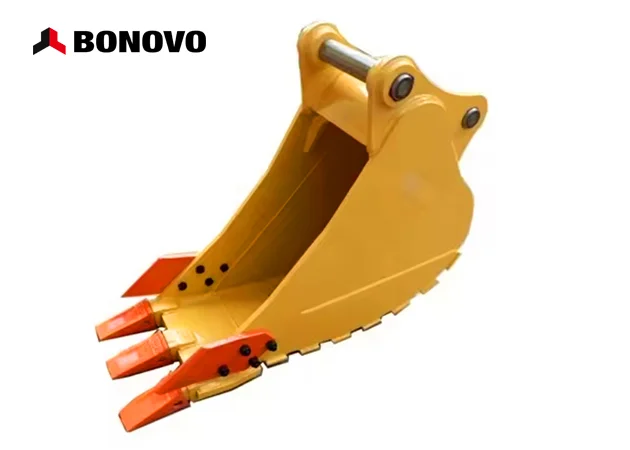Choosing the Right Plate Compactor: Your Guide to Effective Compaction - Bonovo
Are you planning a construction or landscaping project and need to choose a plate compactor? This article will guide you through the process of selecting the right plate compactor for your specific needs. We'll delve into the different types of plate compactors, their compaction capabilities, and the factors you need to consider to ensure effective compaction. Understanding these aspects will not only help you achieve the desired results but also save you time and money. Ready to learn? Let's get started!
1. Compactor Do I Need: Understanding the Basics of Plate Compactors
Before you can choose a plate compactor, it's essential to understand what they are and how they work. A plate compactor, also known as a vibratory plate compactor or vibrating plate compactor, is a piece of construction equipment used to compact soil, gravel, asphalt, and other granular materials. They are designed to compress the material, removing air voids and increasing its density, making it denser. This process is called compaction.
Plate compactors are typically used in a wide range of projects, including:
- Road construction
- Landscape design
- Foundation preparation
- Sidewalk and walkway construction
- Trench backfilling
These compactors are used because soil compaction is a crucial step in any construction project.

The working principle of a vibratory plate involves a vibrating plate attached to an engine. The engine generates a vibratory motion that is transferred to the plate, causing it to vibrate and compact the soil. The compaction force is a combination of the plate's weight and the centrifugal force generated by the vibration. Understanding these basic principles will help you choose the right plate compactor for the job.
2. Plate Compactor Uses: What Are Plate Compactors Used For?
Plate compactor uses are incredibly diverse. These machines aren't just limited to large-scale construction; they're also essential for smaller projects like landscape improvements. Whether you're a professional contractor or a DIY enthusiast, knowing the various plate compactor uses can help you determine if one is necessary for your project.
Here's a breakdown of some common plate compactor uses:
- Soil Compaction: This is the primary function. Plate compactors compress soil to increase its density, providing a stable base for foundations, roads, and other structures. This is essential for projects of every scale.
- Gravel and Aggregate Compaction: They are ideal for compacting gravel and other granular material used in driveways, pathways, and patios. Proper compaction prevents settling and ensures a durable surface.
- Asphalt Compaction: Plate compactors can be used to compact asphalt, ensuring a smooth and even surface. They are particularly useful for patching and small-scale paving projects.
- Trench Compaction: They are suitable for compacting backfill in trenches for utilities, preventing settling and ensuring the long-term stability of the backfilled area.
- Landscape Projects: For landscape projects, they can be used to create patios, walkways, and retaining walls. Proper compaction of the base material is crucial for the longevity of these features.
Understanding these applications will help you choose a plate compactor tailored to your specific needs. The right plate compactor can significantly increase the efficiency and quality of your work.
3. Use a Plate or Something Else? When to Choose a Plate Compactor
While plate compactors are versatile, it's important to understand when they are the right tool for the job. There are alternative compaction methods, such as jumping jack tampers (rammer), which are better suited for certain situations. Knowing when to use a plate compactor versus other equipment will help you optimize your work.
- When to Use a Plate Compactor:
- For compacting large areas.
- When compacting granular materials like gravel or sand.
- When working on asphalt or paved surfaces.
- When a smooth, even surface is required.
- When to Consider Alternatives:
- For small, confined spaces, jumping jack tampers may be more maneuverable.
- For compacting cohesive soils like clay or silt, a jumping jack tamper may be more effective due to its impact force.
- For trench work, a rammer might be more suitable for compacting the backfill.
- If the compactor is used near buildings or sensitive areas, a vibratory plate compactor can be a great option.

A rule of thumb is to consider the type of material and the size of the area. Smaller plate compactors are ideal for landscape projects and smaller jobs, while larger, reversible plate compactors are better for large-scale construction projects. Remember, the goal is effective compaction.
4. Compactor Do I Need?: Types of Plate Compactors and Their Applications
The compactor do I need question can be answered by understanding the different types of plate compactors available, and the range of jobs they are suited to. This section provides a comprehensive look at the various types, helping you choose a plate compactor that matches your requirements.
Here's a breakdown of common plate compactor types:
- Forward-Only Plate Compactors: These are the most common type. They move in a single direction, forward. They are suitable for compacting granular material like gravel, sand, and asphalt. They are also suitable for landscape and small construction projects.
- Reversible Plate Compactors: These machines can move both forward and backward. This feature makes them ideal for compacting in tight spaces, around obstacles, and for trench backfilling. They offer greater versatility.
- Single-Direction Plate Compactors: While similar to forward-only models, these may offer more compaction force or specialized features.
- Dual-Direction Plate Compactors: These can switch directions using a control, providing easier maneuverability.

- Combination Plate Compactors: These compactors combine the benefits of forward and reversible models, often with features like hydraulically driven movement.
Consider the type of material you'll be compacting. Forward-only compactors are often sufficient for granular materials, while reversible models are better for cohesive soils and tight spaces. The compaction force required will also influence your decision.
5. Size Plate Compactor: Matching Compactor Size to Your Project
The size plate compactor you need is a crucial factor in choosing the right plate compactor. The size of the plate directly affects the area you can compact at one time, as well as the compaction force applied. This section will help you determine the plate size that best suits your project requirements.
Here's a guide to help you choose the right size plate compactor:
- Small Plate Compactors: These typically have a plate size of 12-18 inches wide. They are ideal for small landscape projects, like patios, walkways, and small repair jobs. They are highly maneuverable.
- Medium Plate Compactors: These have a plate size of 20-24 inches. They are suitable for a wide range of applications, from small construction projects to larger landscape jobs. They offer a good balance of compaction force and maneuverability.
- Large Plate Compactors: These feature a plate size of 27-36 inches or wider. They are designed for large-scale construction projects, such as road construction, foundation preparation, and large paving jobs. They offer high compaction force and can cover more ground quickly.
Consider the area you need to compact, the type of material, and the depth of compaction required. A general rule of thumb is that the bigger the job, the larger the plate size you'll need. Remember, the goal is optimal compaction.
6. Choosing the Right Plate Compactor: Key Features to Consider
Choosing the right plate compactor requires more than just plate size and type. Several key features can significantly affect the performance and efficiency of your compaction work. This section will outline the important features to consider when selecting the right plate compactor.
- Engine Power: The engine's horsepower determines the compaction force. More powerful engines provide greater compaction, but they may also be heavier and more expensive.
- Centrifugal Force: This is the force generated by the vibrating plate. It is measured in pounds (lbs) or kilonewtons (kN). Higher centrifugal force means more compaction power.
- Vibrating Frequency: Measured in vpm (vibrations per minute), the vibrating frequency impacts the material's density. The higher the frequency, the more effective the compaction is.
- Plate Material: The plate is typically made of steel. Consider the thickness and the wear resistance. Plate compactors that can perform well in both cold and hot temperatures, is extremely helpful.
- Water Tank: A water tank is essential for compacting asphalt. It keeps the plate from sticking to the material.
- Operator Comfort: Features like vibration isolation and ergonomic handles can improve operator comfort and reduce fatigue.
- Ease of Maintenance: Look for features like easy access to the engine and vibrating mechanism for maintenance and repairs.
Consider your specific project needs and prioritize the features that will provide the best results. The right combination of features will ensure effective compaction and enhance your productivity.
7. Compaction Force: How Much Power Do You Need?
The compaction force is arguably the most critical factor when choosing the right plate compactor. It determines how effectively the compactor will vibrate and compress the material. Understanding how much force you'll need is essential for achieving the desired soil compaction and ensuring the longevity of your project.
Here's what you need to know about compaction force:
- Measurement: Compaction force is typically measured in pounds (lbs) or kilonewtons (kN). Higher numbers indicate greater compaction power.
- Application: The force required depends on the type of material, the depth of compaction, and the size of the area.
- General Guidelines:
- For compacting granular materials and landscape projects, a compaction force of 2,000-5,000 lbs may be sufficient.
- For compacting asphalt and larger construction projects, you may need a compaction force of 5,000-10,000 lbs or more.
- For cohesive soils like clay or silt, you might need a compactor with higher impact force or consider a jumping jack tamper.
- Depth of Compaction: The compaction force also influences the depth to which the soil can be compacted.
- Effective Compaction: The compaction force is a key factor in effective compaction.
Consider the type of material you are working with, and consider the type of material and choose the plate compactor with a compaction force that matches your project's requirements.

8. Right Plate Compactor Requires Careful: Project-Specific Considerations
Choosing the right plate compactor requires careful consideration of several project-specific factors. Simply knowing the general guidelines isn't enough. You need to evaluate your project's unique requirements to ensure you choose the right plate compactor for optimal results.
Here are key project-specific considerations:
- Type of Material: Different materials require different compaction techniques and equipment.
- Granular materials like gravel and sand are easier to compact and can be handled by most plate compactors.
- Cohesive soils like clay and silt require more impact force and might benefit from a jumping jack tamper.
- Asphalt requires a water tank on the plate compactor to prevent sticking.
- Area to Be Compacted: The size and shape of the area will influence the plate size and type of compactor you need.
- For large, open areas, a larger plate compactor is ideal.
- For confined spaces or trenches, a smaller, reversible compactor may be necessary.
- Depth of Compaction: The depth of compaction required will determine the compaction force and the number of passes needed.
- Project Specifications: Always check the project specifications or engineering requirements for soil compaction. They will specify the required density and other parameters.
- Accessibility: Consider the terrain and any obstacles that might limit the maneuverability of the compactor.
- Power Source: Consider the power source when selecting the right plate compactor.
- Whether Your Project: Determine whether your project includes construction and landscaping, or only landscape projects, as your needs may be different.
- Examples of Projects: Consider examples of projects like building a sidewalk, and your needs when selecting the right plate compactor.
By carefully evaluating these factors, you can choose the right plate compactor that will ensure effective compaction and the success of your project.
9. Choosing the Right Plate Compactor: Rent or Buy?
Deciding whether to choose to rent or buy a plate compactor is another essential consideration. The best choice depends on your budget, the frequency of use, and the nature of your projects. Both options have their advantages and disadvantages.
- Renting:
- Pros:
- Lower upfront cost.
- No storage or maintenance responsibilities.
- Access to a variety of compactors, allowing you to choose the right plate compactor for each project.
- Ideal if you only need a compactor occasionally.
- Allows you to try different models before committing to a purchase.
- Cons:
- Rental costs can add up, especially for long-term projects.
- Availability may be limited, particularly during peak construction season.
- You may not always have the exact compactor you need.
- You choose to rent and you don't know it's stored properly or know it's stored and handled well.
- Rent makes sense and renting means you can't use the compactor as often as you may want to.
- Pros:
- Buying:
- Pros:
- Long-term cost savings if you use a compactor frequently.
- You have a compactor readily available whenever you need it.
- You can choose a compactor with the exact features you want.
- You know it's stored and you can properly store it.
- Can be considered a long-term investment in your business.
- Cons:
- Higher upfront cost.
- Requires storage space.
- Requires maintenance and repairs.
- If you use the compactor very infrequently, it might be a bad investment.
- Pros:
A basic number crunching exercise can help you decide. Estimate the total cost of renting for all your projects over a period of time (e.g., one year). Then, compare that cost to the purchase price of a compactor, including estimated maintenance costs. Eleven days of rental can sometimes be equal to the cost of buying. Including cleaning the compactor or changing the oil are additional considerations. Consider the costs of gasoline engines, the amount of time you need to operate the machine, and how often you may need to use it, as these may influence your final decision.
10. Selecting the Right: Best Practices for Plate Compactor Operation and Maintenance
Once you select the right plate compactor, proper operation and maintenance are crucial for maximizing its performance and lifespan. Here are some best practices to follow:
- Pre-Operation Checks:
- Inspect the plate for any damage or wear.
- Check the engine oil and fuel levels.
- Ensure the vibrating mechanism is properly lubricated.
- Verify that all controls and safety features are functioning correctly.
- Check for any loose bolts or connections.
- Make sure you know it's stored properly before you use it, and know it's stored away from any hazardous materials.
- Remember to lift the compactor appropriately when moving it.
- Before starting the engine, make sure you follow all engine procedures to start the compactor.
- Operation:
- Always wear appropriate personal protective equipment (PPE), including safety glasses, gloves, and hearing protection.
- Follow the manufacturer's instructions for starting and operating the compactor.
- Ensure the area is clear of obstacles and people.
- Compact in overlapping passes to ensure even compaction.
- Maintain a consistent speed.
- Be mindful of the material you are compacting. Do not over vibrate near utilities.
- If compacting asphalt, use a water tank to prevent sticking.
- When you use plate compactors in a trench, remember to lift the compactor up to the ground level from the bottom of the trench.
- Keep an eye on the engine, and if your compactor may need maintenance.
- Operator comfort during long hours of operating the machine may be improved using proper techniques.
- The compactor will vibrate, and depending on the machine, some compactor may have extra features to improve overall comfort, and to reduce vibration.
- If the compactor will vibrate, make sure it's done in an even manner to obtain optimal compaction.
- Maintenance:
- Clean the plate after each use to remove dirt and debris.
- Change the engine oil and filter regularly.
- Check and tighten any loose bolts or connections.
- Lubricate the vibrating mechanism as recommended by the manufacturer.
- Inspect the vibration isolation components for wear.
- Store the compactor in a dry, covered location.
- If the compactor has a power source, check the power source and make sure it is working properly.
- If you know it's stored, it must be in an accessible area so that you can make sure it is working.

Following these practices will ensure your plate compactor operates safely and efficiently, helping you achieve effective compaction and extend the life of your construction equipment.
- Remember to lift the compactor properly, and to safely compact the soil.
Conclusion:
- Understanding the Basics: Recognize the different types of plate compactors and their functions.
- Matching the Size: Choose a plate size that aligns with your project requirements.
- Assessing the Power: Determine the necessary compaction force for your soil type.
- Considering All Factors: Consider project-specific needs, such as the type of material and accessibility.
- Making the Decision: Decide whether to choose to rent or buy a plate compactor.
- Ensuring Longevity: Implement proper operation and maintenance practices.
By following these guidelines, you can confidently choose a plate compactor that meets your needs, enhancing the productivity and success of your projects. Remember, from landscape projects to major construction, the right plate compactor is a crucial tool for achieving optimal results.




